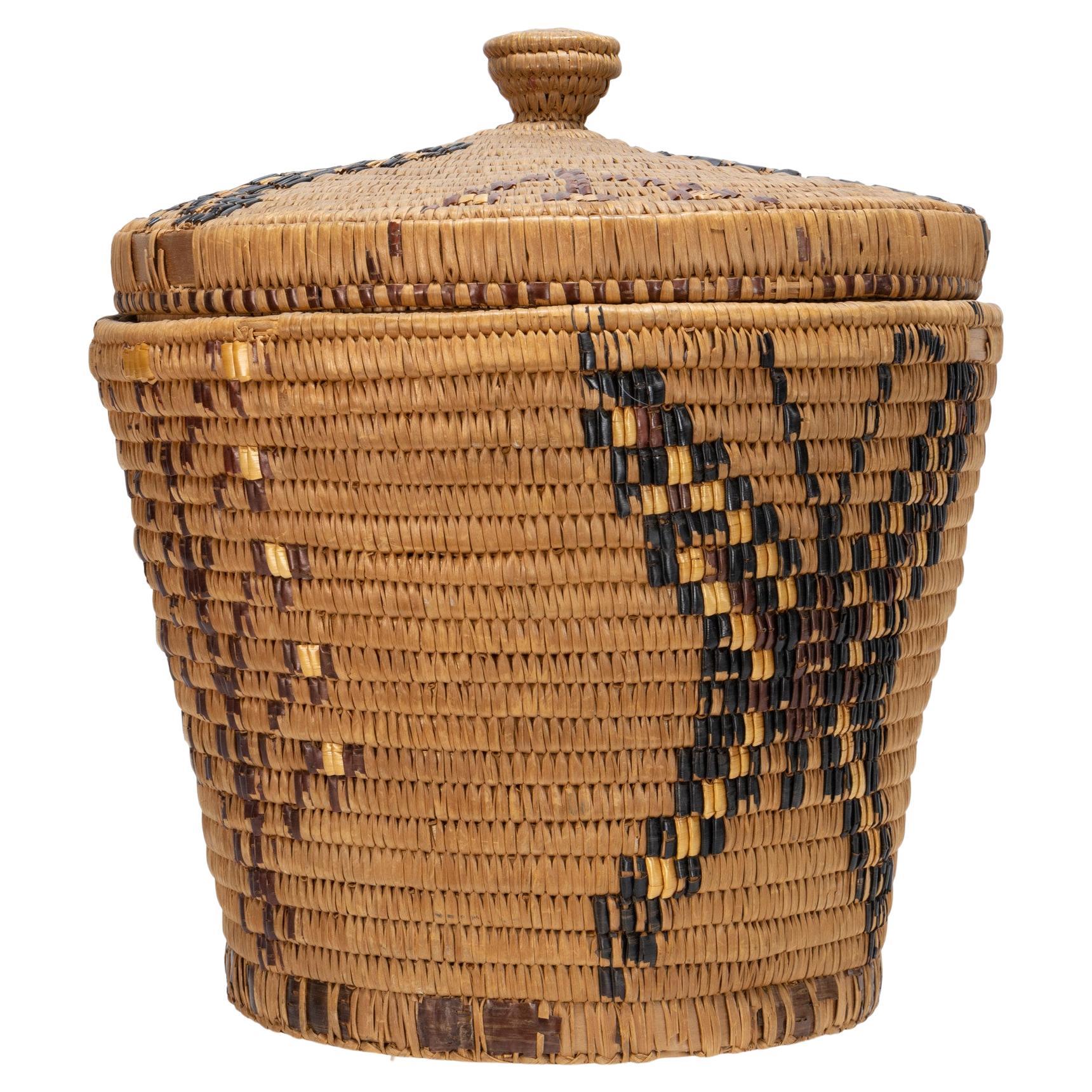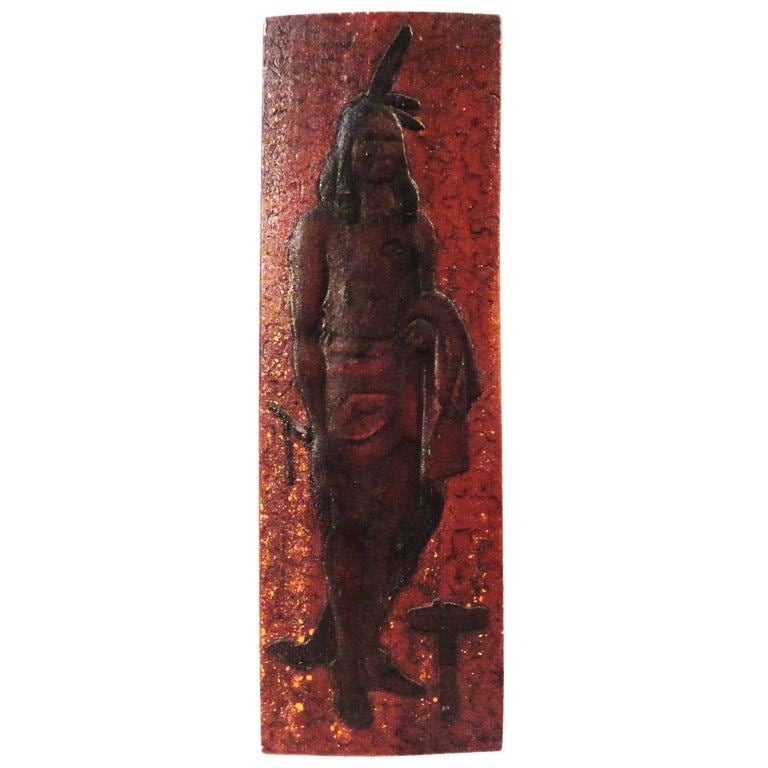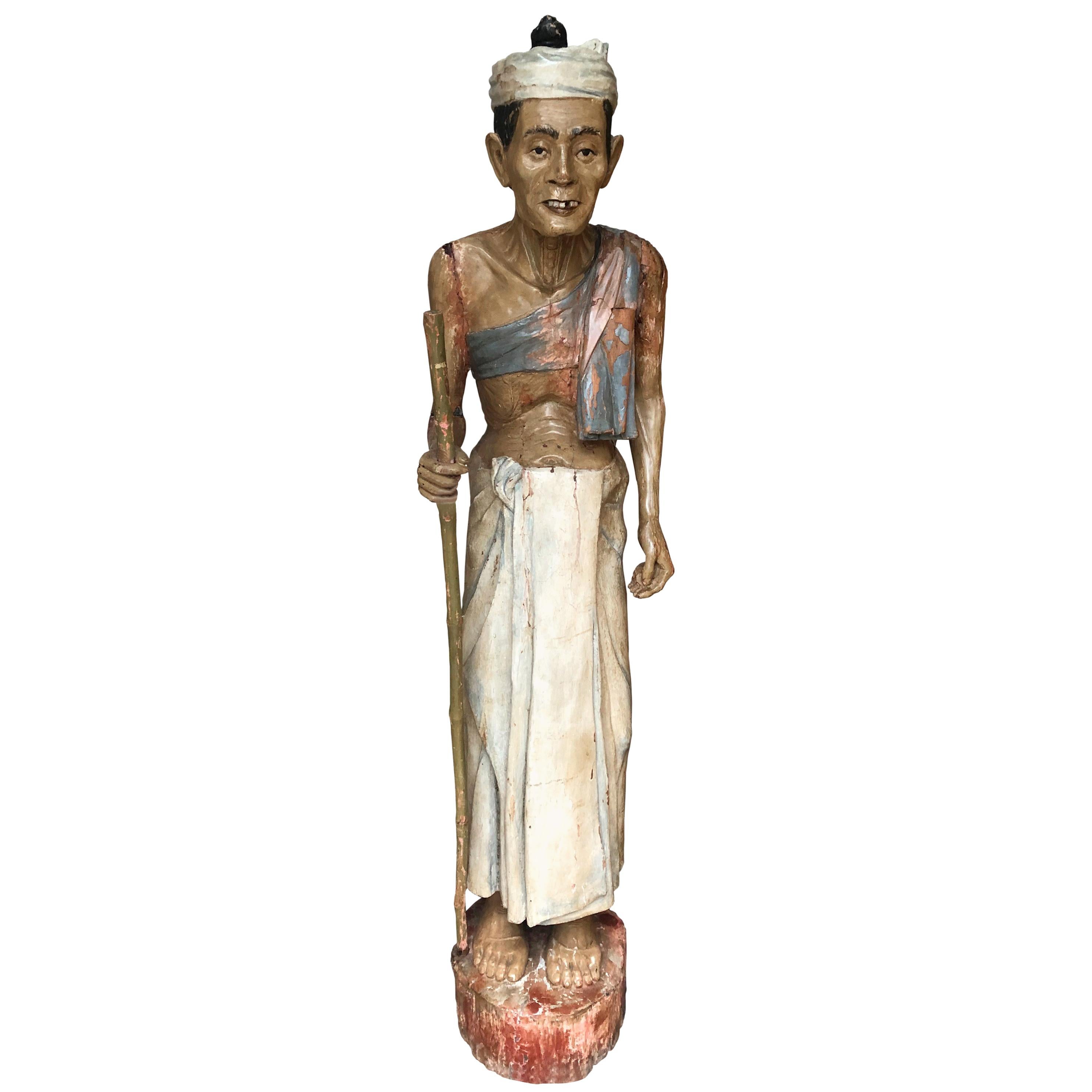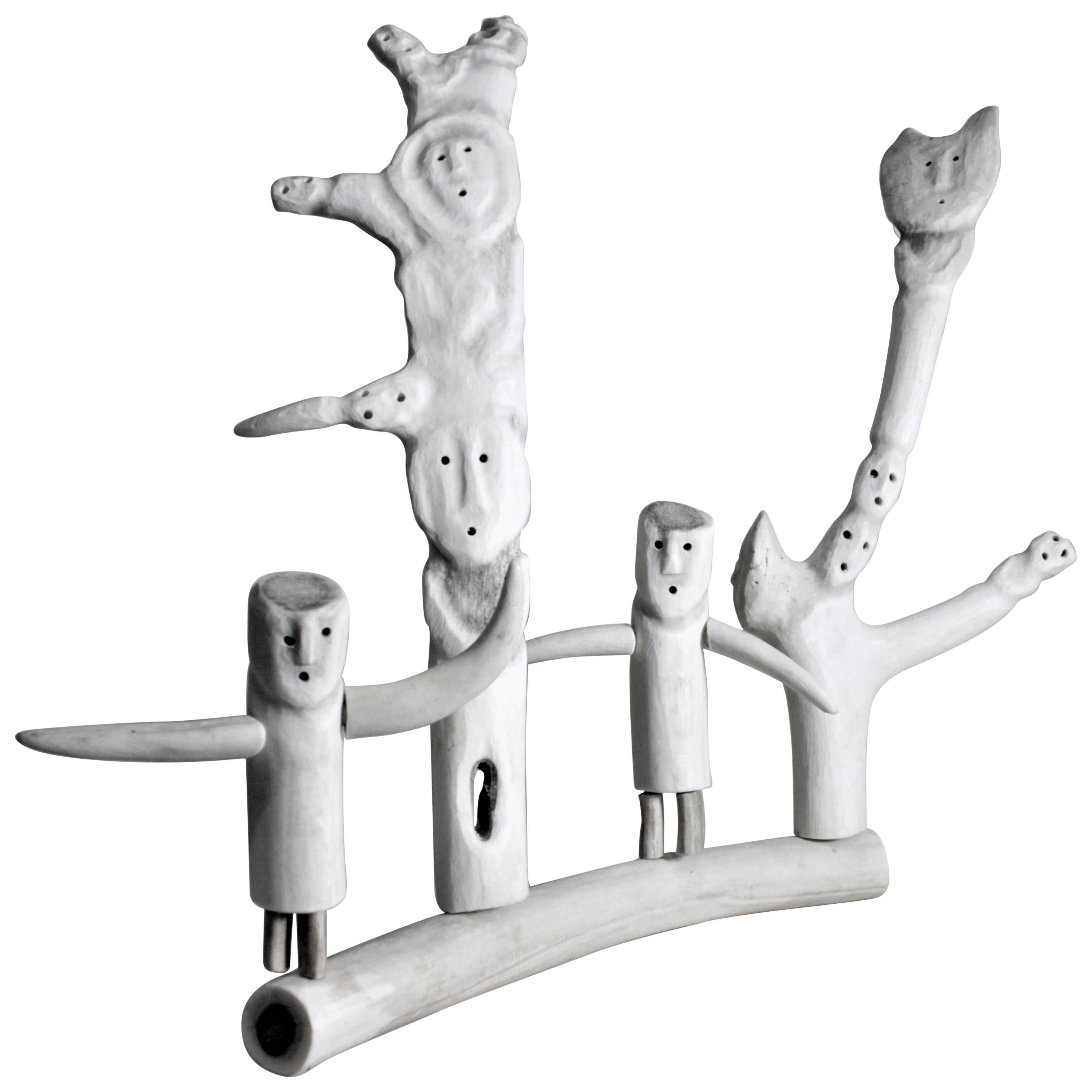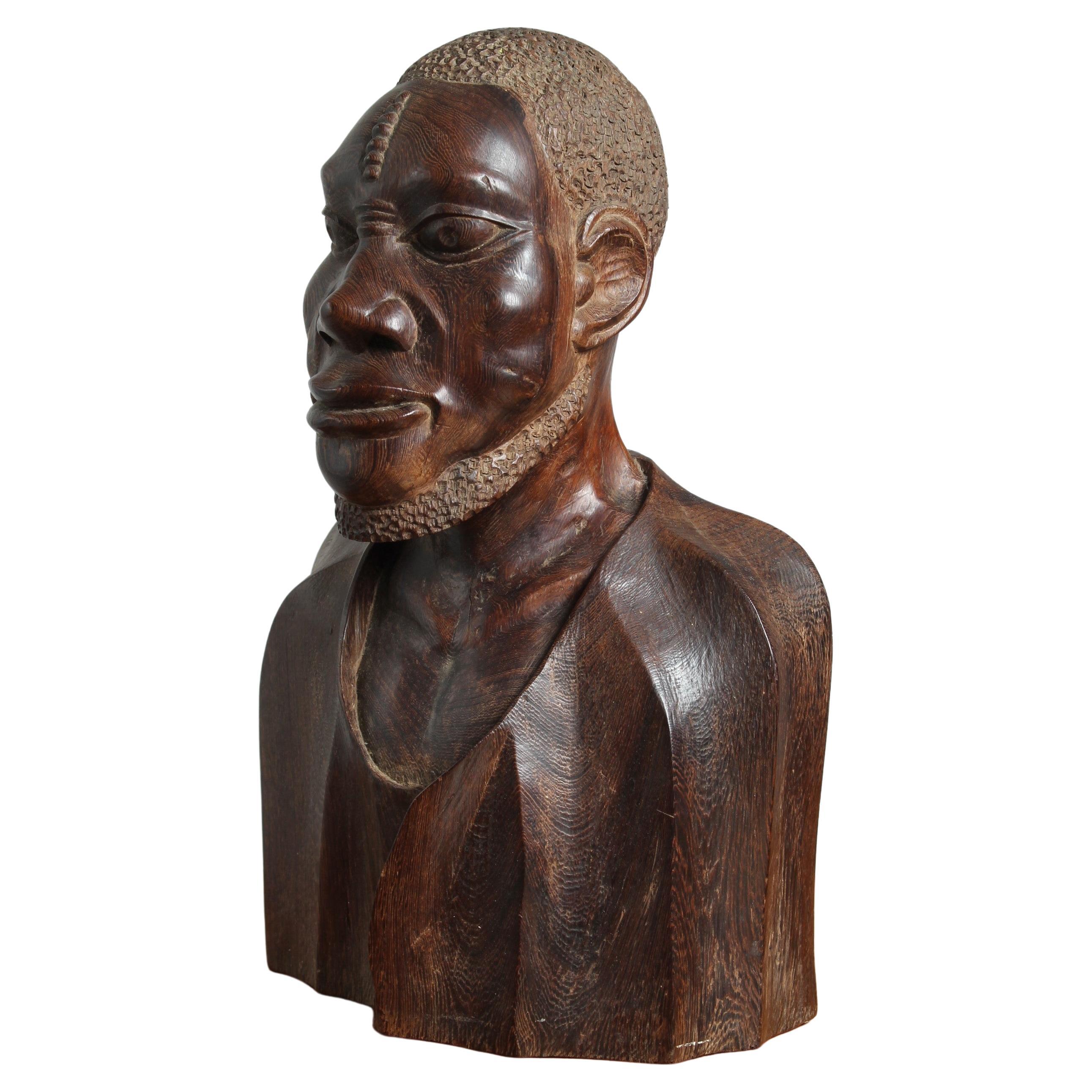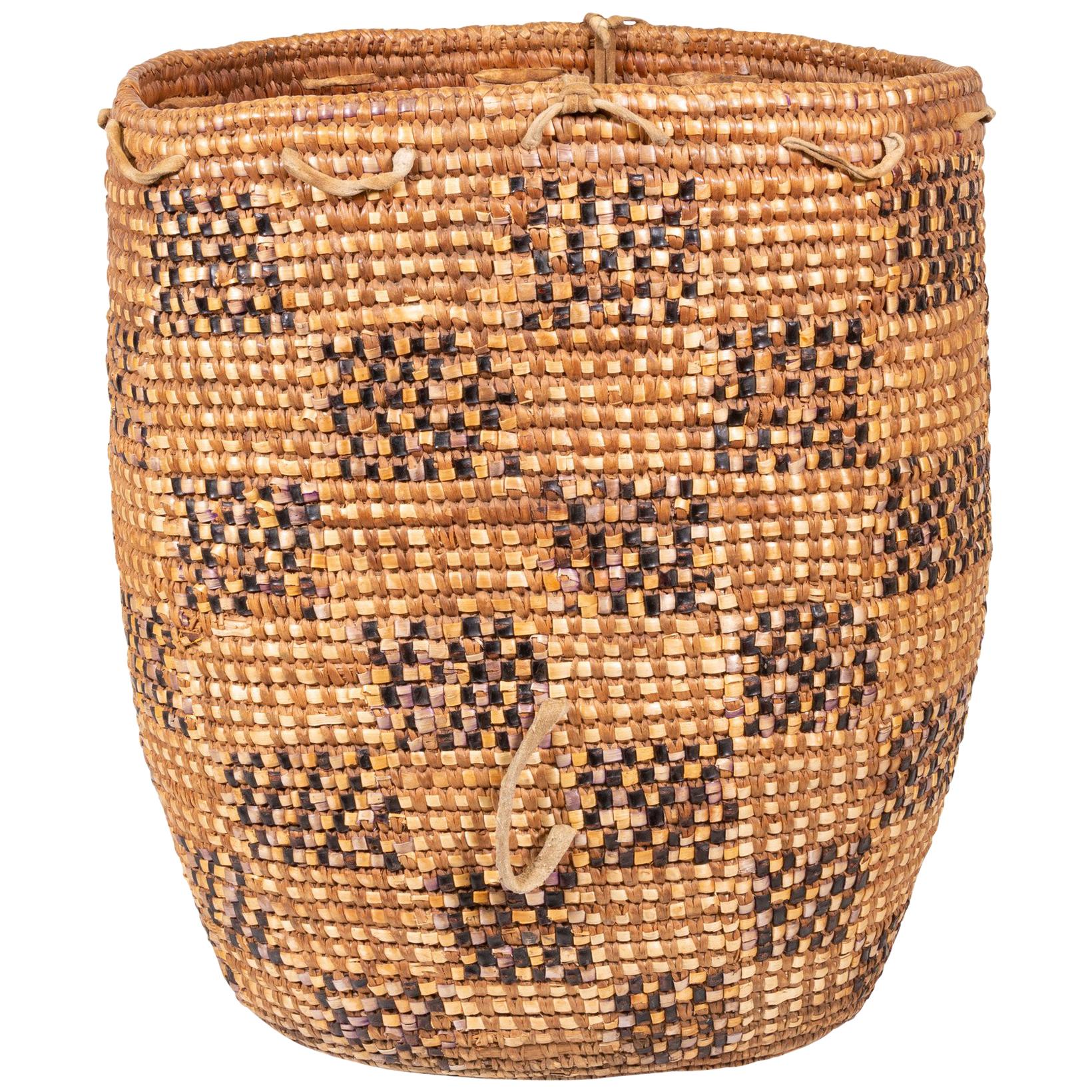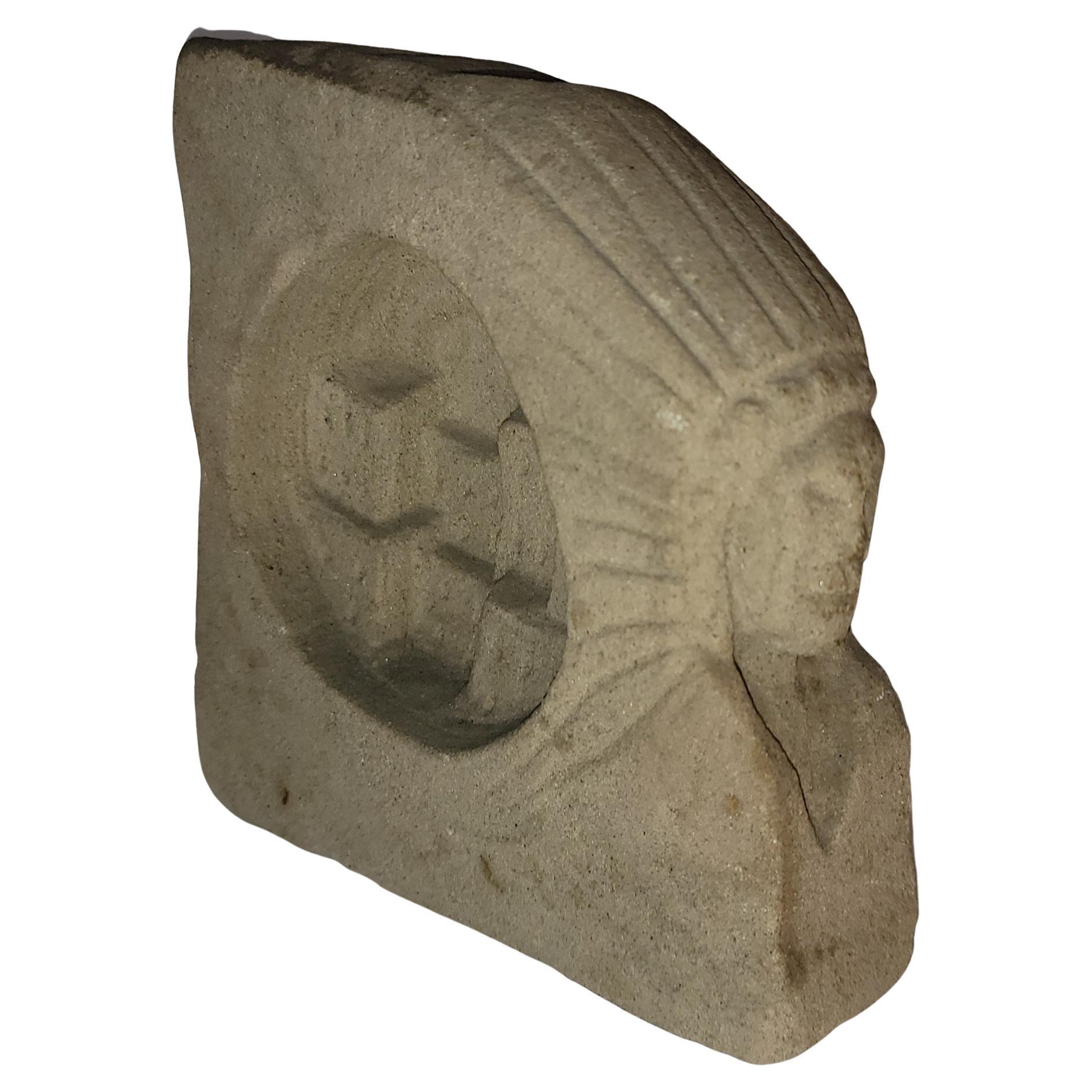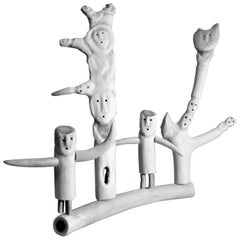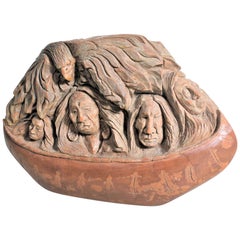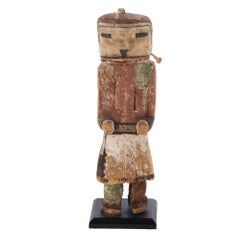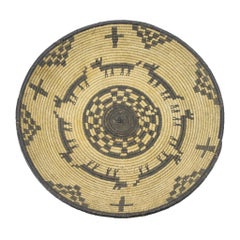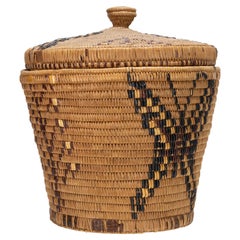
19th Century Native Yampara Carved Wood Bust/Sculpture
View Similar Items
Want more images or videos?
Request additional images or videos from the seller
1 of 8
19th Century Native Yampara Carved Wood Bust/Sculpture
About the Item
- Dimensions:Height: 14.5 in (36.83 cm)Width: 6 in (15.24 cm)Depth: 7.5 in (19.05 cm)
- Style:Native American (Of the Period)
- Materials and Techniques:
- Place of Origin:Bolivia
- Period:
- Date of Manufacture:circa 1890
- Condition:Wear consistent with age and use. Minor losses. Paint loss, some age cracking.
- Seller Location:Hamilton, CA
- Reference Number:1stDibs: LU135525407453
About the Seller
5.0
Platinum Seller
These expertly vetted sellers are 1stDibs' most experienced sellers and are rated highest by our customers.
Established in 2010
1stDibs seller since 2015
1,216 sales on 1stDibs
More From This SellerView All
- Antique Folk Art Carved Gesso over Wood and Hand Painted Native Man StatueLocated in Hamilton, OntarioPresumed to date from the late 19th century, this life-sized Folk Art carved and hand painted study depicts a Native man dressed in traditional attire and holding a staff. The artist is unknown and this sculpture is unsigned and done in a very realistic style. The carving, likely done in Cyprus wood...Category
Antique Early 19th Century American Folk Art Native American Objects
MaterialsSoftwood, Paint
$5,995 Sale Price73% Off - Large Hand Carved Inuit Stylized Figurative SculptureLocated in Hamilton, OntarioThis handcrafted sculpture was made in Northern Canada by an Inuit artisan in circa 1970. This sculpture is a series of two stylized human figures intermixed with two representations of presumably Spirits, which has several carved faces in them. The entire sculpture is composed of hand carved and handcrafted antler, likely Caribou. This sculpture may symbolize a blessing of good fortune for an upcoming hunt. The series of four figures are each pegged on the bottom and fit into holes drilled into the base. The base is numbered on the bottom which identifies that it was registered, and also has a paper label. Due to the composition of this sculpture it may only be shipped within Canada...Category
Late 20th Century Canadian Native American Native American Objects
MaterialsAntler
- Thomas B. Maracle Indigenous Canadian Mohawk Stone Carving or SculptureLocated in Hamilton, OntarioThis large Indigenous North American stone carving was done by Thomas B. Maracle of the Mohawk Nation in circa 1985 in his signature Indigenous Folk Art...Category
Late 20th Century North American Native American Native American Objects
MaterialsStone
- Large Lladro Yupik or Inuit Girl Sitting Cross Legged Figurine or SculptureBy LladroLocated in Hamilton, OntarioThis very large hand painted porcelain figurine was made by the renowned Llladro company of Spain in approximately 1985. The figurine depicts a young Inuit girl seated cross legged w...Category
Late 20th Century Spanish Native American Native American Objects
MaterialsPorcelain
- Large Lladro Yupik or Inuit Boy Crouched and Resting Figurine or SculptureBy LladroLocated in Hamilton, OntarioThis very large hand painted porcelain figurine was made by the renowned Llladro company of Spain in circa 1985. The figurine depicts a young Inuit boy crouched with his head in his ...Category
Late 20th Century Spanish Native American Native American Objects
MaterialsPorcelain
- Inuit Soapstone Figural SculptureLocated in Hamilton, OntarioEskimo figural soapstone carving.Category
Mid-20th Century Canadian Figurative Sculptures
MaterialsSoapstone
$995 Sale Price20% Off
You May Also Like
- 19th Century Hopi Carved and Painted Wood Kachina FigureBy Indian Cottage IndustriesLocated in Bradenton, FL19th Century Hopi carved Kachina doll. Circa 1900: cottonwood with earthen pigments, 7 3/8 in. H., with a stand. Collection inventory number on back of skirt.Category
Antique Late 19th Century American Native American Figurative Sculptures
MaterialsWood
- 19th Century Native Apache Pictorial TrayLocated in Coeur d'Alene, IDApache pictorial tray with seven dogs and four crosses. Period: Last quarter of the 19th century Origin: Apache Size: 12" x 2". Family Owned & Operated Cisco’s Gallery deals in t...Category
Antique Late 19th Century American Native American Decorative Baskets
MaterialsOther
- 19th Century Salish Native Lidded BasketLocated in Coeur d'Alene, IDSalish lidded basket with butterflies and trees. Period: Last quarter 19th century Origin: Salish, Northwest Size: 14" x 14" Family Owned & Operated Cisco’s Gallery deals in the ra...Category
Antique Late 19th Century American Native American Decorative Baskets
MaterialsOther
- Fantastic Original Painted and Carved 19th Century Indian PlaqueLocated in Los Angeles, CAThis wonderful original old surface plaque has a great old patina and a hand-carved and painted Indian chief. The Indian is in full original clothes with the feathers in his head. Wi...Category
Antique 19th Century American Folk Art Sculptures
MaterialsPine
$895 Sale Price59% Off - Native American Parfleche Box, Sioux, 19th Century Painted Hide PlainsBy Sioux Indian ArtLocated in Denver, COAntique Sioux (Native American/Plains Indian) Parfleche in a box form constructed of rawhide and intricately painted in an abstract design with hourglass and geometric motifs with natural pigments and red trade cloth. At the time this was created, the Sioux Indians were nomadic and are associated with vast areas of the Great Plains of the United States including present-day North and South Dakota, Minnesota, Nebraska and Montana. Authenticity is guaranteed. Box is in very good condition - please contact us for a detailed condition report. Parfleches are rawhide containers which were fundamental to the Plains way of life. Functioning essentially as protective travelling suitcases, they enabled the nomadic tribes to effectively pursue buffalo herds and migrate between seasonal camps. So critical were they to a nomadic existence that over 40 tribes are known to have historically produced parfleches. Collectively, these tribes inhabited an area which encompassed the entirety of the Plains, as well as the parts of the Southwest, the Transmontane and Western Plateau regions. Parfleches were, out of necessity, robust and versatile objects. They were designed to carry and protect within them anything from medicinal bundles to seasonal clothing or food. In fact, it was because of the containers’ robusticity and variety that parfleches earned their name in the Anglo world. Derived from parer (to parry or turn aside) and fleche (arrow), the word parfleche was coined by 17th century French Canadian voyageurs and used to describe indigenous objects made from rawhide. Despite their common utilitarian function, parfleches served as one of the major mediums through which Plains Indian tribes could develop their long-standing tradition of painting. In fact, it is in large part due to the parfleche that tribal style emerged. Even though parfleche painting developed simultaneously with beading and weaving, painting as an artistic tradition held particular importance in tribal culture. Believed to have evolved from tattooing, it had always been used as a conduit through which tribal and individual identity could be expressed. As such, many tribeswomen were deeply committed, some even religiously, to decorating their parfleche either with incised or painted motifs that were significant to them and/or the tribe. For some tribes, such as the Cheyenne, the decorative processes which surrounded parfleche production were sacred. For others, it seems that their parfleche designs shared an interesting artistic dialogue with their beadwork, indicating a more casual exchange of design motifs. This particular relationship can be seen in Crow parfleche...Category
Antique Late 19th Century American Native American Native American Objects
MaterialsHide
- Late 19th or Early 20th Century Bust, Sculpture, Carved WoodLocated in Greven, DEExceptionally beautiful bust carved in the finest quality craftsmanship. Used is an extremely heavy and extremely hard wood. Presumably, the sculpture comes from the time when it c...Category
Antique 19th Century Busts
MaterialsWood


